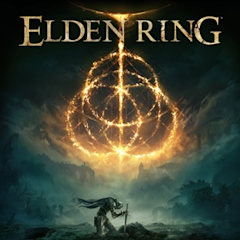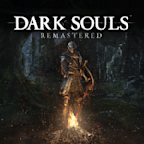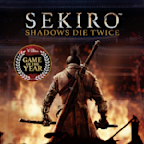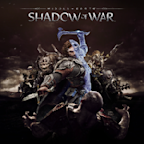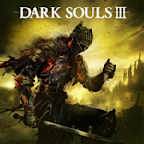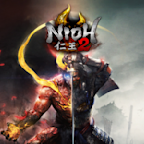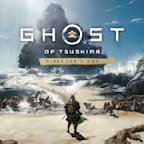Search results
Feb 23, 2022 · ELDEN RING is a fantasy action RPG from the creators of Dark Souls and Sekiro. Explore a vast open world full of danger and adventure, and face powerful enemies and bosses in this epic game.
- Put a ring on it.
- Up until this point, which From Software game has been the toughest?
- Every IGN FromSoftware Game Review
- What We Said About Sekiro: Shadows Die Twice
- Score: 9.5
- Elden Ring: PS5 vs Xbox Series X | S - Performance Review
- Every 10/10 Game Review IGN Has Ever Given
- Verdict
- GeneratedCaptionsTabForHeroSec
By Mitchell Saltzman
Updated: Mar 13, 2022 8:41 pm
Posted: Feb 23, 2022 3:00 pm
In the 87 hours that it took me to beat Elden Ring, I was put through an absolute wringer of emotion: Anger as I was beaten down by its toughest challenges, exhilaration when I finally overcame them, and a fair amount of sorrow for the mountains of exp I lost along the way to some of the toughest boss encounters FromSoftware has ever conceived. But more than anything else I was in near-constant awe – from the many absolutely jaw-dropping vistas, the sheer scope of an absolutely enormous world, the frequently harrowing enemies, and the way in which Elden Ring nearly always rewarded my curiosity with either an interesting encounter, a valuable reward, or something even greater. FromSoftware takes the ball that The Legend of Zelda: Breath of the Wild got rolling and runs with it, creating a fascinating and dense open world about freedom and exploration above all else, while also somehow managing to seamlessly weave a full-on Dark Souls game into the middle of it. It shouldn’t be a surprise to anyone that Elden Ring ended up as one of the most unforgettable gaming experiences I’ve ever had.
To set the stage, all you know from the outset is that you play as a “Tarnished” of no renown, blessed by grace, and are compelled to make the journey to The Lands Between and become an Elden Lord. What that actually means, how one might go about doing that, and what the deal is with that giant glowing golden tree are all things that you have to discover yourself. Like other FromSoft games, the grand story is hard to fully digest on a first playthrough, especially because there’s no in-game journal to refresh you on the events, characters, or unique terms you encounter across dozens of hours. There really should be, but it is a story I nonetheless enjoyed trying to piece together for myself. I look forward to supplementing that knowledge with the inevitable painstakingly detailed lore videos that emerge from the community later.
It ended up being the organic side stories that kept me most enthralled rather than the grand overarching plot that credits Game of Thrones’ George R.R. Martin as its scenario writer. FromSoft smartly doesn’t change much in its approach to these from the Souls games, Bloodborne, or Sekiro; you’ll just naturally meet characters as you explore and discover the world and become involved in their problems. There are no “!” markers on the map, no waypoints to guide you to them, and these characters don’t always flag you down or initially want or need anything from you. They’re just people with their own agendas and goals, whose stories are impacted based on your own actions or inactions.
You also have more freedom in how you approach combat than any previous FromSoft game thanks to a bunch of familiar new systems that are used in interesting ways here. Stealth is a more viable option thanks to the addition of crouch-walking, which finally lets you sneak by tough enemies or get behind them for a critical hit; there’s now horseback combat in large, open areas which gives you more mobility and the ability to attack on both sides with your right-handed weapon, but has the drawback of taking away your ability to roll out of the way of big attacks; you can craft items on the fly using materials found in the world so you can be ready for whatever a situation calls for; you can summon a large variety of creatures to fight for you, each with their own unique abilities and situational advantages; and most substantially, you can equip Ashes of War to your weapons and completely change their affinity and skill.
Elden Ring's difficulty surprised me, even as a veteran of the Soulslike genre.
“
The Ashes of War system essentially combines two elements of prior Souls games – weapon affinities and weapon skills – by making them items that you can freely equip to your armaments. For example, let’s say I find a really good rapier and I really like the moveset, but I’m building my character with a focus on the Intelligence stat, which means it won’t get the kind of damage bonuses it needs to be a viable weapon. If I find an Art of War that bestows a magic spell onto a weapon, I can equip it and transform it into a magic weapon, thereby giving it Intelligence scaling on top of whatever skill the Ash of War has. Best of all, if I eventually decide to respec into a different build, I can still keep the same weapon and just put a different Ash of War onto it. Of course, you also have to find a specific item to unlock the different affinities, but it's nonetheless an incredibly smart addition that allows for a ton of variety in your preferred weapons.
Sekiro evolves From Software’s formula into a stylish stealth-action adventure that, naturally, emphasizes precision and skill in its combat. It walks the line between deliberate and patient stealth and breakneck melee combat against threats both earthly and otherworldly. Its imaginative and flexible tools support a more focused experience that sha...
Read the full Sekiro: Shadows Die Twice review
It isn’t just the promise of making my numbers go up that called me to turn over every stone on the map: The Lands Between is positively brimming with riches, intrigue, and danger at every turn. Much of what Elden Ring’s open world does well can be traced directly back to things that made Breath of the Wild stand out from the many open-world games that came before it. (The PC version of Elden Ring also unfortunately borrows some of Breath of the Wild’s stuttery framerate woes). It’s that same feeling of starting out in a world with little explicit guidance, finding something that piques your curiosity on your own, doing whatever it takes to get there, and then being rewarded for that curiosity.
In Elden Ring, very rarely did my predictions come true.
“
The big difference is that in Breath of the Wild I could usually predict what’s going to happen when I get to that orange glowy thing off in the distance. I’ll do a puzzle, unearth a shrine, do another puzzle, and probably get a cool temporary weapon and a spirit orb. That’s not to take anything away from Breath of the Wild – it was awesome, but that pattern became somewhat routine well before the end. In Elden Ring, by contrast, very rarely did my predictions come true. I’d head to a lake and all of a sudden get ambushed by a dragon, follow a river expecting to collect some minor crafting materials only to find a dungeon filled with enemies and traps, enter a cave and get ambushed by little goblin men, or take a seemingly unimposing elevator and find that it just keeps going down further and further and further… until eventually I found myself not in a small dungeon but one of its many awe-inspiring new regions.
Best of all, each of these little excursions rewards your curiosity with something worthwhile. That could be a new weapon, a new Ash of War, a valuable consumable, a new creature for you to summon, a new spell, or a new NPC to talk to. There are so many valuable rewards available that I never felt disappointed by my prize, regardless of the amount of effort it took.
Elden Ring pushes some improvements in model quality, scene density, lighting, effects, and more compared to FromSoftware’s previous games. From a technical perspective, it is certainly up there with the best that team has made, even if the framerate can never reliably hit the 60fps cap it has set for itself. The Series S does lose out in such a GPU-heavy game, with basic level of detail culling being a key area the engine doesn’t do well. Buildings can stay visible and not swap to a reduced polygonal model or simply removed from render when far away, half-rate animations can still crop up at long distances on all platforms, and the rocky performance means Framerate mode and Quality mode aren’t as differentiated as they should be. If you have the choice then PS5 is the best all round option in all modes and game areas, but the Series X still offers a welcome boost over the previous gen and is never far behind enough to cause great concern. And while it’s not as smooth as it should be by modern standards, if you played Dark Souls back on the PlayStation 3 or Xbox 360, then this is a silky-smooth affair by comparison. - Michael Thompson, March 3, 2022
Read the full Elden Ring Performance Review
But the thing that’s most impressive about Elden Ring is that, in between all of this brilliant open world design, there are also a handful of Legacy Dungeons that still deliver those “wide linear” levels that Souls fans have come to expect. These are gigantic castles, forts, manors, underground labyrinths, and more that are packed with secret areas, challenging bosses, and multiple paths that are linked via one-way shortcut doors. If they were strung all together without being tied to an open world, they could probably exist on their own as Dark Souls 4.
Bottom line: Elden Ring’s open-world exploration is a new benchmark. It’s constantly exciting, rewarding, and full of moments that made me go “Holy shit” in a host of different ways.
It’s constantly exciting, rewarding, and full of moments that made me go “Holy shit.”
“
They’re both great additions that offer melee classes fun new tools, but for the most part, FromSoftware has certainly adopted an “If it ain’t broke, don’t fix it” approach. What really makes the combat in Elden Ring so good though is its enemy design and variety. Not only are a fair number of them horrifying (not quite up to Bloodborne levels of grotesquerie, but still some weapons-grade nightmare fuel) but some of these baddies are absolutely vicious, coming at you with wild swings and combos that seemingly go on forever and can hit from 10 feet away. Others are more methodical and hide behind their shields to wait for the right opportunity to either parry you or catch you while you’re winding up. Others still are weak, but can be huge threats when they ambush you with a grab that kills in one hit. Many are designed to punish those who just mash the dodge-roll button without care, which makes Elden Ring a very hard game, but it’s a good style of difficulty; one that’s less about fast reaction speeds and twitch reflexes (though those certainly help) and more about learning, adapting, and finding the planted weaknesses in an enemy’s attack patterns. Deciphering those tells and acting upon each moment of opportunity is a large part of why these games are so much fun.
And then there are the bosses. I don’t want to spoil them, but there are a handful that are some of the most visually and mechanically impressive FromSoftware has ever crafted. Some of the later ones got really close to crossing the line in terms of what I’d deem fair and reasonable when it comes to life-restoring second phases after already brutally tough first phases and two or three-against-one handicap battles, but fortunately, as mentioned before, any walls I hit were surmountable once I took the time to do something else and come back stronger.
It is no exaggeration to say that Elden Ring is FromSoftware’s largest and most ambitious game yet, and that ambition has more than paid off. Even after 87 hours of blood, sweat, and tears that included some of the most challenging fights I’ve ever fought, and innumerable surprises, there are still bosses that I left on the table, secrets that I’ve...
IGN's Mitchell Saltzman praises Elden Ring as one of the most unforgettable gaming experiences he's ever had. He explores the vast and diverse world, the challenging combat, the intriguing story, and the freedom to choose your own path.
Elden Ring is a 2022 action role-playing game developed by FromSoftware. It was directed by Hidetaka Miyazaki with worldbuilding provided by fantasy writer George R. R. Martin . It was published for PlayStation 4 , PlayStation 5 , Windows , Xbox One , and Xbox Series X/S on February 25 by FromSoftware in Japan and Bandai Namco Entertainment ...
- Yuzo Kojima
- FromSoftware
- February 25, 2022
- Hidetaka Miyazaki
ELDEN RING. THE NEW FANTASY ACTION RPG. Rise, Tarnished, and be guided by grace to brandish the power of the Elden Ring and become an Elden Lord in the Lands Between. Recent Reviews: (6,880) All Reviews: (601,132) Release Date: Feb 24, 2022.
- (601.3K)
- FromSoftware Inc.
- FromSoftware Inc.
- Feb 24, 2022
ELDEN RING is a fantasy RPG game by FromSoftware and George R. R. Martin, set in the Lands Between. Pre-order now and get exclusive bonuses, editions, and expansions.
May 16, 2022 · IGN's comprehensive guide to Elden Ring, the open world game from the creators of Dark Souls and George R. Martin. Find tips, tricks, strategies, locations, secrets, and more for your journey in the Lands Between.
